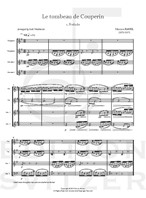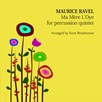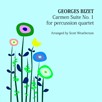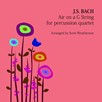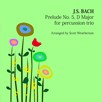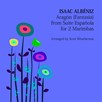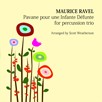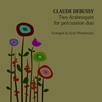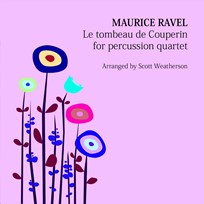
Le tombeau de Couperin
Composer: Maurice Ravel
Instrument: Percussion Quartet
Level: Intermediate
Published: 2014
Price: €45.00
Item details
-
Description +
-
Arranged by Scott Weatherson
Duration: 18 min.Maurice Ravel's Le Tombeau de Couperin was written for piano between the years of 1914-17 and orchestrated by the composer in 1919. The original version contains six movements of which four – Prelude, Forlane, Menuet and Rigaudon – were used for the orchestral version. Ravel dedicated each movement to a friend who had lost his life fighting in the First World War. The overall tone of the music is generally light, which may seem to be at odds with the dedication to Ravel's fallen comrades, however in response to such criticisms the composer remarked “The dead are sad enough, in their eternal silence.”
Stylistically the work draws upon the style of the Baroque French keyboard suite, each movement corresponding to the various dance styles contained in such suites. Such writing, similar to much of Baroque repertoire, translates well to keyboard percussion instruments. In keeping with Baroque traditions, Ravel uses ornamentation heavily throughout the piece, and wrote in the score: Les petites notes, dans toute cette suite, doivent être attaquées sur le tempo – Small notes throughout this suite are attacked on the beat.
This arrangement is written for a quartet of xylophone, vibraphone and 2 marimbas (including one 5 octave instrument). The colourful nature of the music provides solo opportunities for all instruments, and the vibraphone and 1st marimba parts utilize 4 mallet technique.
-
-
Instrumentation +
-
Percussion Quartet (4 players)
Instruments Required:
1 Xylophone
1 Vibraphone
2 Marimbas (including one 5 octave marimba)
-
-
Watch+
-
About the composer +
-
Joseph Maurice Ravel (7 March 1875 – 28 December 1937) was a French composer, pianist and conductor. He is often associated with impressionism along with his elder contemporary Claude Debussy, although both composers rejected the term. In the 1920s and '30s Ravel was internationally regarded as France's greatest living composer.
Born to a music-loving family, Ravel attended France's premier music college, the Paris Conservatoire; he was not well regarded by its conservative establishment, whose biased treatment of him caused a scandal. After leaving the conservatoire Ravel found his own way as a composer, developing a style of great clarity, incorporating elements of baroque, neoclassicism and, in his later works, jazz. He liked to experiment with musical form, as in his best-known work, Boléro (1928), in which repetition takes the place of development. He made some orchestral arrangements of other composers' music, of which his 1922 version of Mussorgsky's Pictures at an Exhibition is the best known.
As a slow and painstaking worker, Ravel composed fewer pieces than many of his contemporaries. Among his works to enter the repertoire are pieces for piano, chamber music, two piano concertos, ballet music, two operas, and eight song cycles; he wrote no symphonies or religious works. Many of his works exist in two versions: a first, piano score and a later orchestration. Some of his piano music, such as Gaspard de la nuit (1908), is exceptionally difficult to play, and his complex orchestral works such as Daphnis et Chloé (1912) require skilful balance in performance.
Ravel was among the first composers to recognise the potential of recording to bring their music to a wider public. From the 1920s, despite limited technique as a pianist or conductor, he took part in recordings of several of his works; others were made under his supervision.
-
-
Credits +
-
Front Cover Graphics and Layout: Ronni Kot Wenzell
Engraving: Scott Weatherson & CPH Engraving
Printed in Copenhagen, Denmark
Copyright © Edition Svitzer
www.editionsvitzer.com
-
